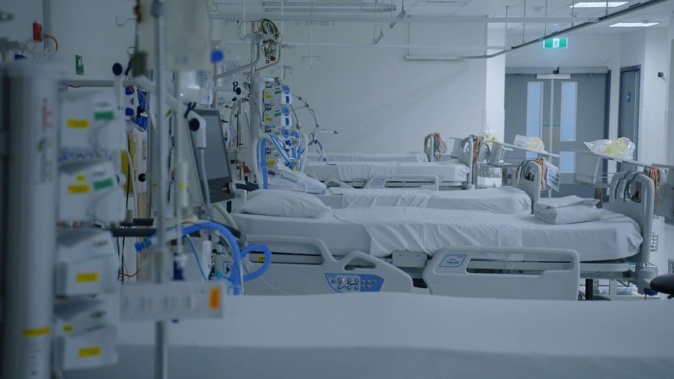
The number of people rushed to hospital after becoming infected with Covid-19 has soared rapidly compared to last year's coronavirus outbreak and nationwide lockdown.
But the ratio of those critically ill has remained much lower, new data reveals.
One expert said the higher number of hospitalisations was likely because of the speed in which Delta was spreading and suggested the lower ICU rate was because of more younger people catching Covid, rather than elderly.
The data comes as lead epidemiologist Professor Michael Baker warned if elimination failed, New Zealanders could be in lockdown until Christmas.
While falling case numbers were providing hope, the Delta variant of Covid-19 could spread quickly, which meant elimination could still fail, Baker said.
Ministry of Health figures showed that on day 17 of lockdown there were 43 people in hospital fighting the highly contagious virus, up from seven people about a week ago.
In comparison to last year, there were just 15 people is hospital on day 17 of the nationwide lockdown, which was less than day seven, when there were 16.
Twenty per cent (nine out of 43) of those hospitalised are currently in intensive care units (ICUs). On day 17 of last year's nationwide lockdown, 33 per cent (5 out of 15) were in ICU.
When comparing the total number of active cases on day 17 of lockdown, there was far more last year (886), compared to this year (731).
This was likely because there was a longer lag for the Government to shift the country into alert level 4.
The Ministry of Health reported its first community case on February 28 last year but didn't enter alert level 4 until nearly a month later, on March 25. By then, there were already 205 people infected (183 active cases as some had recovered).
In comparison, the Government moved the country into a nationwide lockdown on August 17 after just one person tested positive for the virus in the community.
Australasian College for Emergency Medicine president Dr John Bonning said more people were ending up in hospital because the virus was spreading faster than the first wave, as the Delta variant was more transmittable.
"We went from one person to 800 people in just over two weeks; it is significantly more transmittable.
"Our guess is if one person in the household gets it, the whole household gets it," he said.
This meant it was much more likely that someone in that household could end up in hospital.
"The ones that were getting really sick in New Zealand were believed to be over 50, with comorbidities and were unvaccinated," Bonning said.
But overall more younger people were being affected because that was the age bracket of the earlier Delta cases.
As of Friday, 64 per cent (489) of the total 764 active cases (including those in MIQ) were under the age of 30.
Bonning said perhaps that was why there were fewer people in ICU, compared to last year, because the younger people were fitter and more capable of fighting the virus.
The Herald asked the Ministry of Health for a breakdown of those in hospital and ICU who had been fully vaccinated or received one dose. A spokesman said: "At this stage the ministry is not providing a breakdown for the current hospitalisations."
Last month, the Herald revealed how day-to-day ICU capacity hadn't improved since the pandemic began and often struggled with "business as usual" demands.
There are currently 284 fully staffed ICU beds across public hospitals, and 629 ICU-capable ventilators, with 133 in the national reserve if required.
But while the focus had been on the need to increase ICU capacity, Bonning said emergency departments were even more at threat of running out of room.
"We need more isolation space within hospitals, in our respiratory wards and emergency departments, where most people with Covid end up."
He referred to a UK statistic: 25 per cent of people who caught Covid became infected while in hospital.
'We do not want to end up like that," Bonning said.
Take your Radio, Podcasts and Music with you









